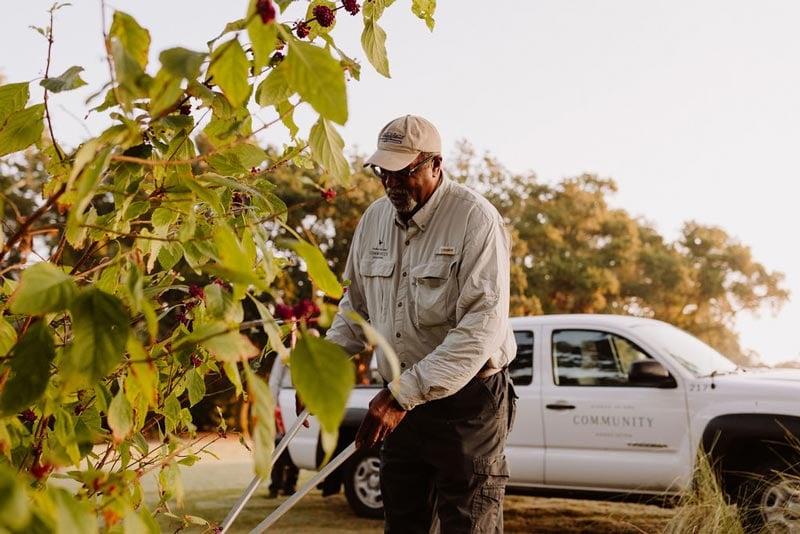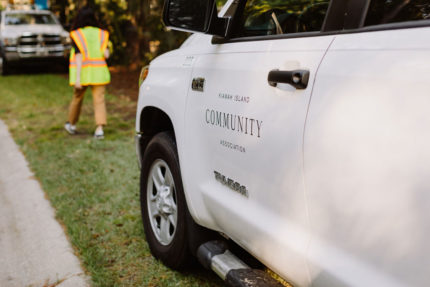Mar
13
2020
From The Blog
Island Entities Unite to Address Water
Water is one of Kiawah’s greatest assets – the expanse of the Atlantic Ocean along its 10 miles of beach, and the iconic curve of the Kiawah River as it snakes through the marsh to meet it. It’s part of why people come here and a big part of why they decide to stay, making Kiawah their home.
Many coastal towns are starting to experience water in a different way: on its roadways and properties more frequently than ever before. Kiawah has also been experiencing an increasing number of flood events per year, and the island’s entities are pursuing plans to alleviate problem areas and proactively address other issues.
KICA is working with an adaptive management approach, which “combines management and monitoring, with the aim of updating knowledge and improving decision-making over time” (US
Geological Survey). This approach builds on itself, with each step providing data that helps to inform the next steps in the process. This is an ideal approach for water management on Kiawah in part because much of the data needed to create long- term solutions is just starting to be available. In this way, KICA can combine thoughtful short-term action with proactive long-term planning.
The first step in managing water on the island is getting water off the island more efficiently, an area KICA has been addressing for several years by working to optimize drainage. Miles of metal pipes (not ideal in this saltwater-rich environment) installed by the original Kuwaiti developer have been replaced or repaired. In 2018, KICA made a change to its drainage work that allows staff engineers to work on an entire drainage line at a time, enabling them to improve more drainage with lower mobilization costs. Optimizing drainage is a key recommendation of water resilience projects like the Dutch Dialogues, which worked with the City of Charleston in 2019 to provide recommendations on responsibly living with water. KICA board treasurer and Water Management Task Force chair Dave Morley says, “Once drainage is optimized, you have the data that enables us to make larger strategies.”
A hydrological study was completed in 2015, the first study of its kind conducted on the island. The hydrologic model created with the study data helps staff engineers understand the complexities of the island drainage system and how various repairs affect it. It also helps staff to better understand the tide cycle requirements for draining the system in anticipation of a storm event. The model was built and is maintained by Stantec, an international engineering design and consulting firm. That model continues to be used to make informed decisions regarding the island’s drainage system.
The hydrological model was a significant addition to KICA’s data arsenal, but it also prepared KICA to take another step forward in 2019, with the hiring of its first resilience specialist, Lucas Hernandez. (For a look at Lucas’ background and work, check out this Digest article (kica.us/resilience) and Java With Jimmy session (kica.us/aug2019).
Lucas has created a similar model that uses different methodology, known as a raster-based flood model. This model is based on the topography of the island, and identifies how water moves across and permeates the island. It is can show areas of potential challenge in the rainfall and tidal events that cause nuisance flooding on roadways and properties.
Both models are pivotal to KICA’s Water Management Task Force. The task force is the culmination of initial steps, combining KICA’s focus on drainage optimization with the need to combat flooding issues members experience now and look toward future changing conditions. Including KICA’s staff engineers, member stakeholders, board representatives, KICA’s resilience specialist and the engineering firm Stantec, the task force used these models to propose infrastructure enhancements and virtually test the effectiveness of the solutions before making recommendations on them. The task force’s work and findings will be presented to the community at KICA’s annual meeting.
As a part of his work, Lucas routinely meets with property owners, and provides information on mitigation options to address their unique situations. This service, which Lucas hopes to expand in the future, not only allows him to enhance the accuracy of his model, it also fosters relationships and opens channels of communication between KICA and its members.
Fostering relationships to address island flooding and data collection is important because no single entity can mitigate flooding on its own. Only by working together can Kiawah entities and property owners create a holistic plan for the island’s future. While KICA has made collecting data a target, other island entities are gathering important information about the island as well.
The Town of Kiawah Island has studied Kiawah’s long-
term water challenges, like sea level rise, and put forth
a report recommending practical actions the island might take to mitigate those vulnerabilities. The town has partnered with the Kiawah Conservancy for two important projects that fulfill some of these suggestions. The groundwater table research project is the first phase of a project to monitor groundwater across Kiawah Island, with a focus on salinity level and water table elevation. The first phase will help provide information on plantings specific to the level of salinity, and develop a long-term monitoring approach. In their recommendation that the City of Charleston conduct a groundwater assessment, the Dutch Dialogues team expressed concern “that sea level rise is going to impair substantially shallow drainage systems, decreasing their efficiency and performance and thereby increasing flood risk.” It is imperative that Kiawah’s groundwater table is established so island entities can plan responsibly for the future. Fortunately, Kiawah’s low density development provides flexibility in addressing challenges, which is an enviable position compared with other places.
The second project is the Marsh Vulnerability study. Salt marshes reduce flooding by slowing and absorbing rainwater, protect water quality by filtering runoff, and provide protection from storm surge and tidal flooding. The study will map the current extent of our salt marsh, document changes over the last several decades, identify human influences on the marsh (drainage outfalls, bulkheads, docks, bridges, and homes), and help model future marsh impacts from flooding and potential sea-level rise. The project will also identify vulnerable areas of the marsh, prioritize restoration projects, and assist in the development of a Marsh Management Plan.
Each of these steps provides a valuable result for the island but considered together, they put Kiawah in a better place to plan for the future. By working together to proactively address island concerns and potential scenarios, members and island entities help safeguard the island we all enjoy and preserve its beauty for the long-term.

